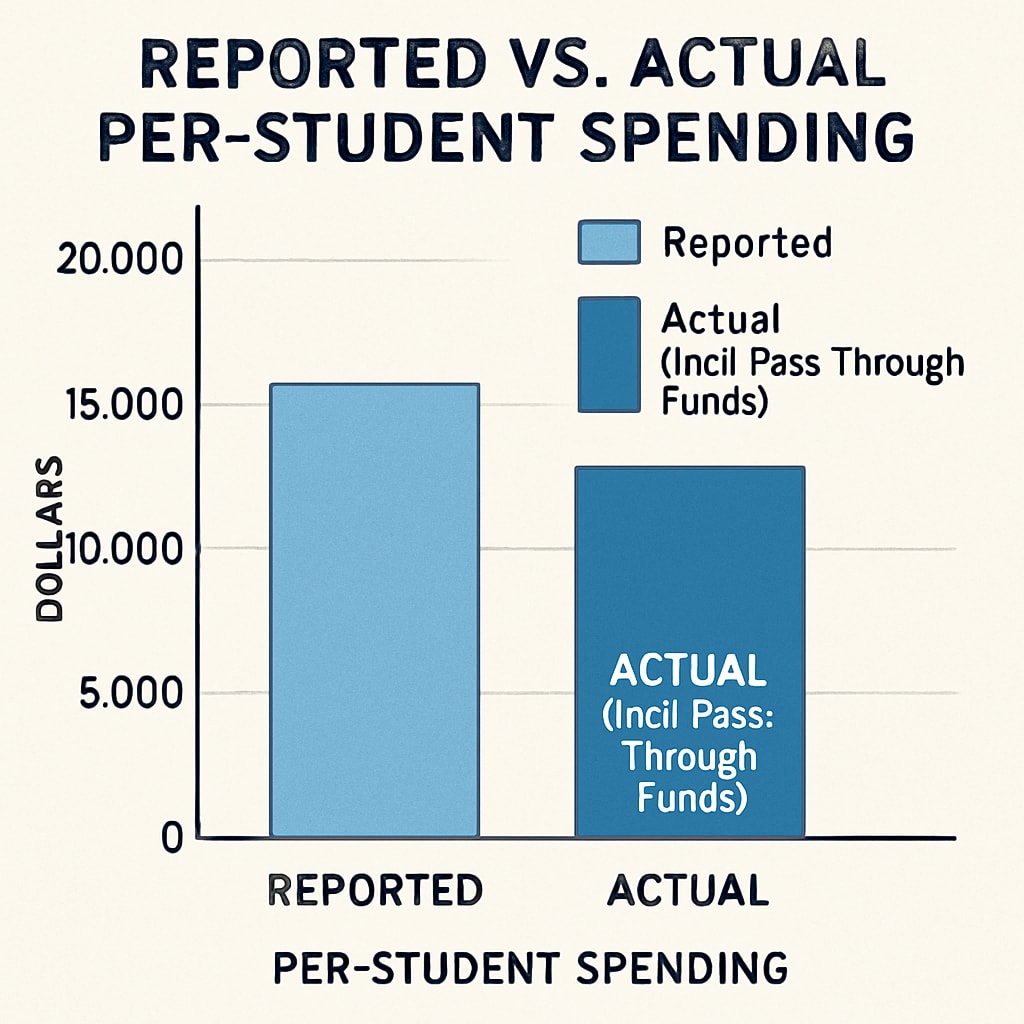When evaluating school performance and resource allocation, statistical measures like “per-student spending” often dominate the conversation. However, the inclusion of pass-through funds—monies that flow through a school district but are not directly used for its students—can significantly distort these statistics. This financial mechanism not only inflates per-student spending figures but also obscures the real picture of educational investment, raising concerns about equity and transparency in school budgets.
The Mechanism of Pass-Through Funds
Pass-through funds are sums of money allocated to school districts but earmarked for specific purposes that may not directly benefit the district’s students. For example, a district might receive federal or state grants to manage programs for students outside its jurisdiction or to fulfill administrative responsibilities. While these funds appear on the district’s financial statements, they do not impact the classroom resources available to local students.
This practice becomes problematic when per-student spending calculations include these funds. By artificially inflating the total budget, the district’s reported spending per student appears much higher than it actually is. In reality, the funds may never enhance classroom learning or provide tangible support to students within the district.

How Pass-Through Funds Skew School Budgets
Including pass-through funds in school budgets creates a misleading narrative about resource allocation. Policymakers, educators, and the public often rely on per-student spending figures to assess a district’s commitment to education. When these figures are inflated, they paint a false picture of adequacy and equity, potentially diverting attention from districts truly in need.
For instance:
- A district managing pass-through funds for a statewide program might report high per-student spending, even if its classrooms are underfunded.
- Comparisons between districts become unreliable, as those with significant pass-through funds appear to invest more in their students.
- Decisions on funding allocations may be skewed, as inflated figures reduce the urgency for additional support.
According to a report on school finance, transparency in budget reporting is critical to ensuring equitable resource distribution. Yet, the current approach to pass-through funds undermines this goal.
The Broader Impact on Education Equity
The misrepresentation caused by pass-through funds has far-reaching consequences for educational equity. Districts serving low-income or marginalized communities often struggle to secure adequate funding. When their needs are masked by inflated spending statistics, they may be overlooked in favor of districts with more transparent budgets.
Moreover, the issue complicates policymaking. Legislators and administrators rely on accurate data to allocate resources effectively. Distorted figures can lead to misinformed decisions, perpetuating inequities across the education system.

Addressing the Challenges of Financial Transparency
To ensure fair and accurate reporting, several measures can be implemented:
- Separate Budget Categories: Districts should distinguish between operational funds and pass-through funds in their financial reports.
- Enhanced Oversight: State and federal agencies can establish guidelines to prevent the misrepresentation of pass-through funds in per-student spending calculations.
- Public Awareness: Educating stakeholders about the limitations of current financial metrics can foster more informed discussions on school funding.
As a critical education policy issue, this challenge demands attention from all levels of governance. Only through transparency and accountability can we ensure that every dollar truly benefits the students it is intended to serve.
In conclusion, pass-through funds may appear to bolster a district’s financial standing, but their inclusion in per-student spending metrics obscures the reality of resource allocation. Addressing this issue is essential for fostering equity and trust in education funding. By prioritizing transparency, we can create a system that genuinely supports the needs of all students.
Readability guidance: Short paragraphs and lists summarize key points, while overuse of passive voice and lengthy sentences is avoided. Transition words enhance flow and coherence.


